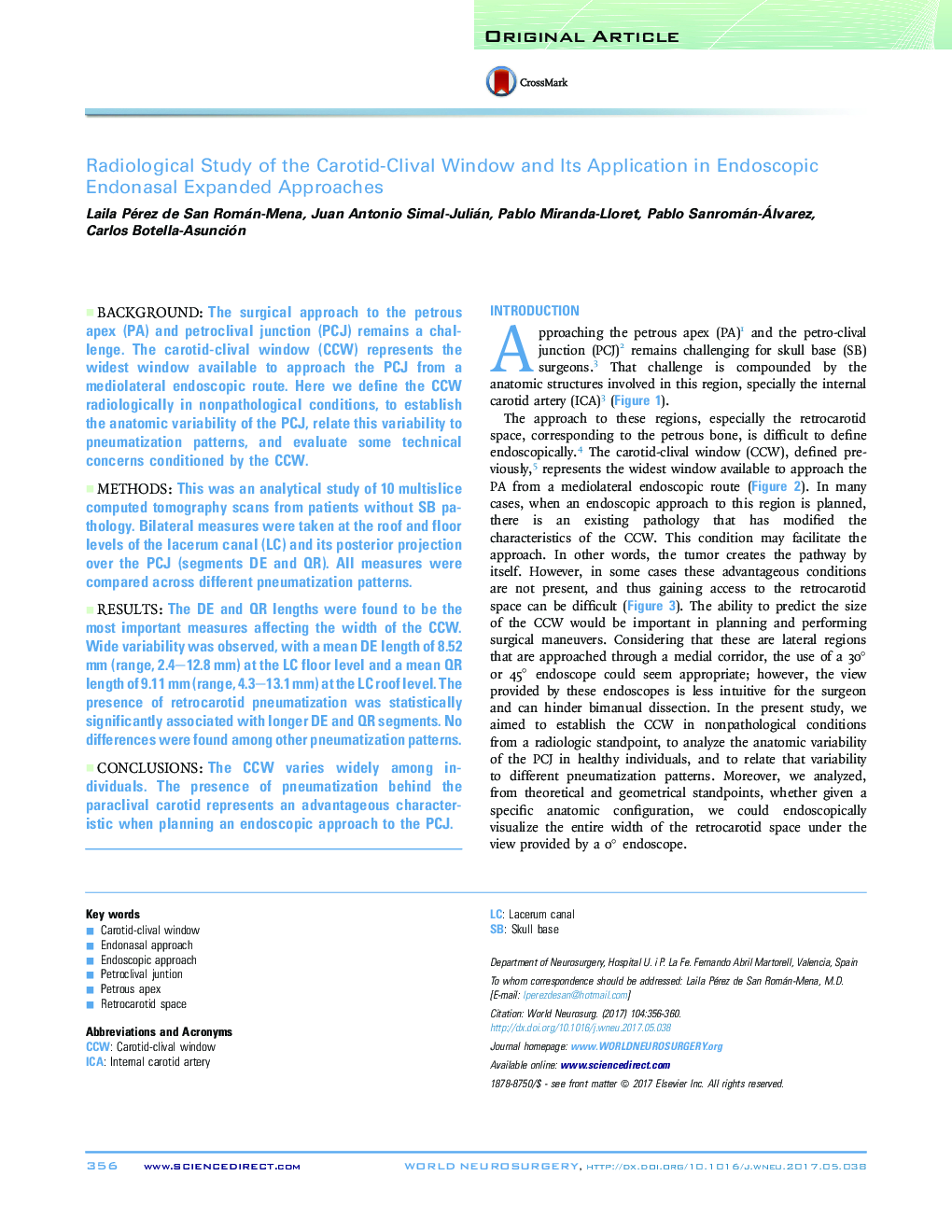| کد مقاله | کد نشریه | سال انتشار | مقاله انگلیسی | نسخه تمام متن |
|---|---|---|---|---|
| 5634433 | 1581451 | 2017 | 5 صفحه PDF | دانلود رایگان |
BackgroundThe surgical approach to the petrous apex (PA) and petroclival junction (PCJ) remains a challenge. The carotid-clival window (CCW) represents the widest window available to approach the PCJ from a mediolateral endoscopic route. Here we define the CCW radiologically in nonpathological conditions, to establish the anatomic variability of the PCJ, relate this variability to pneumatization patterns, and evaluate some technical concerns conditioned by the CCW.MethodsThis was an analytical study of 10 multislice computed tomography scans from patients without SB pathology. Bilateral measures were taken at the roof and floor levels of the lacerum canal (LC) and its posterior projection over the PCJ (segments DE and QR). All measures were compared across different pneumatization patterns.ResultsThe DE and QR lengths were found to be the most important measures affecting the width of the CCW. Wide variability was observed, with a mean DE length of 8.52 mm (range, 2.4-12.8 mm) at the LC floor level and a mean QR length of 9.11 mm (range, 4.3-13.1 mm) at the LC roof level. The presence of retrocarotid pneumatization was statistically significantly associated with longer DE and QR segments. No differences were found among other pneumatization patterns.ConclusionsThe CCW varies widely among individuals. The presence of pneumatization behind the paraclival carotid represents an advantageous characteristic when planning an endoscopic approach to the PCJ.
Journal: World Neurosurgery - Volume 104, August 2017, Pages 356-360
